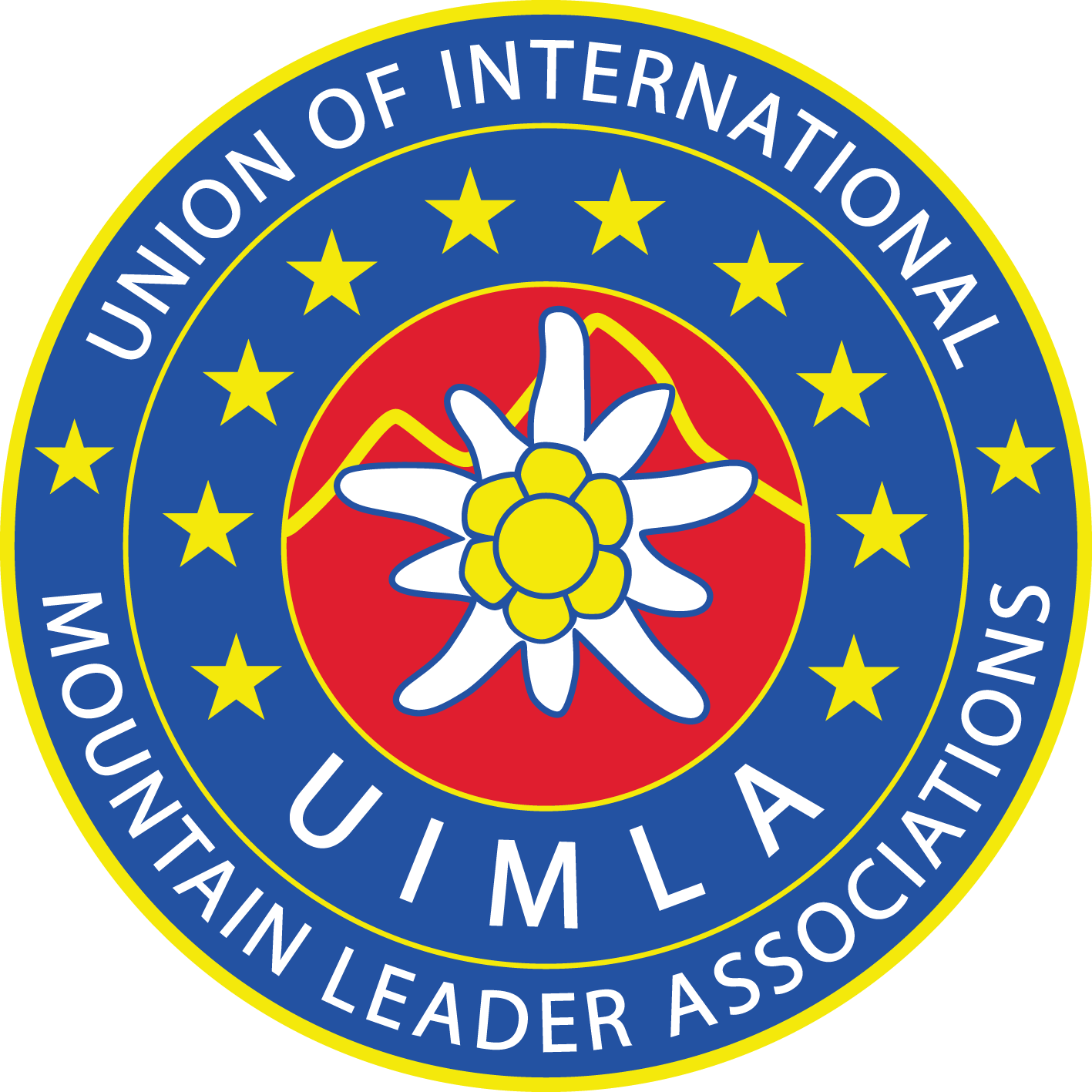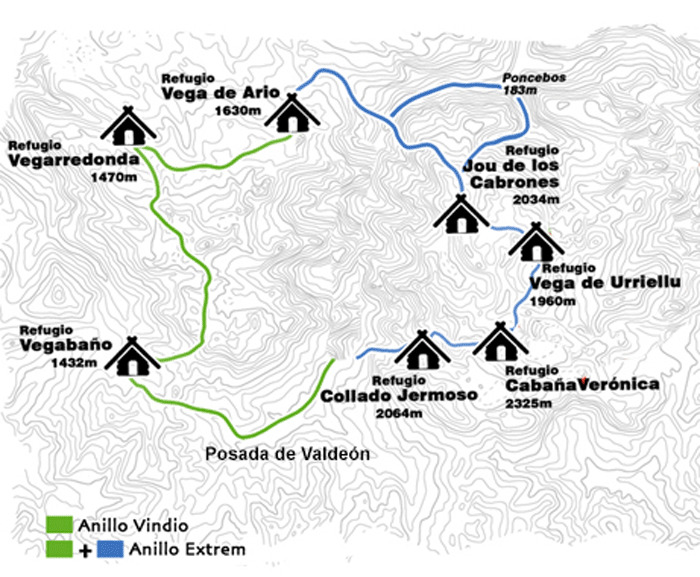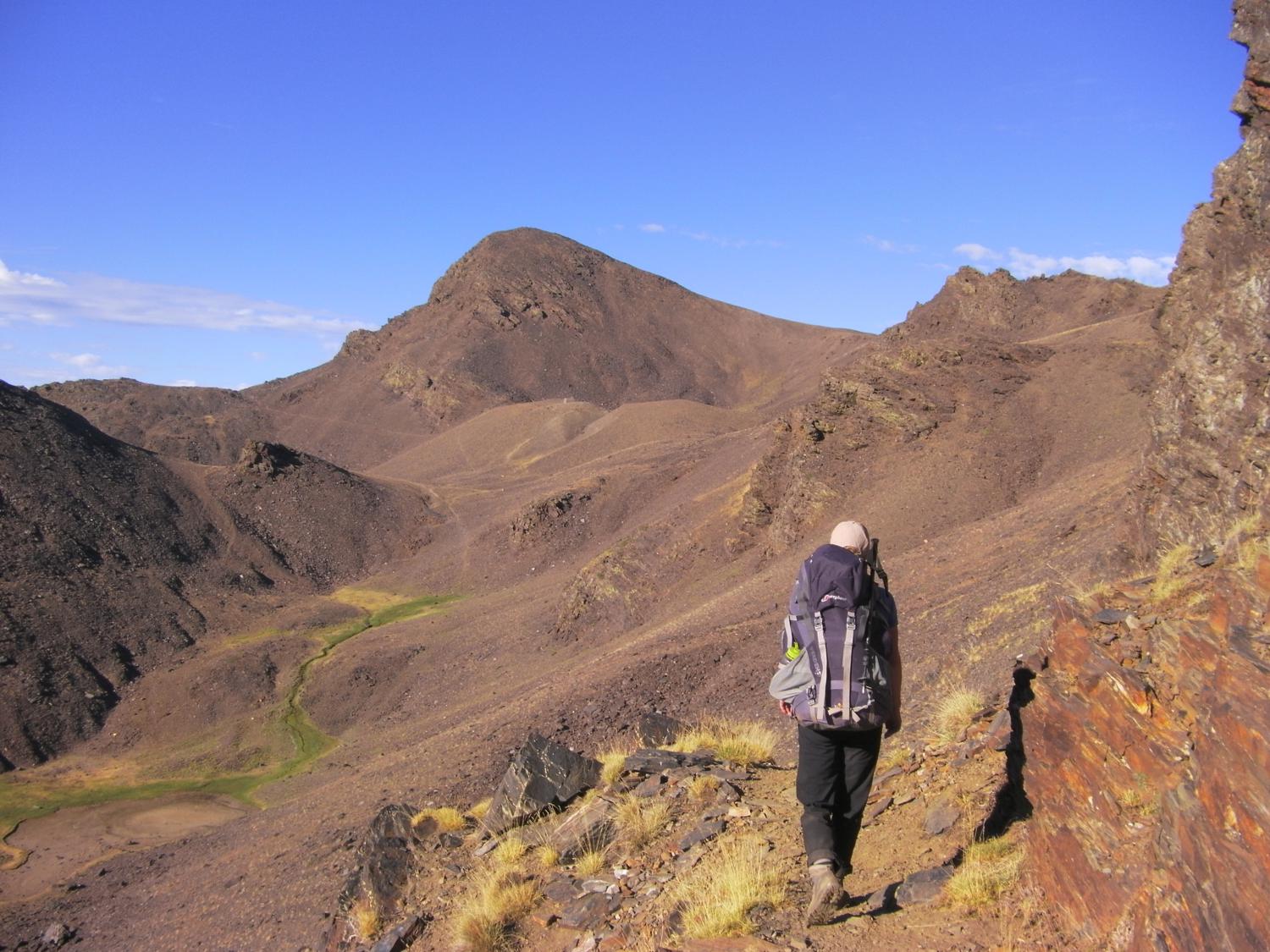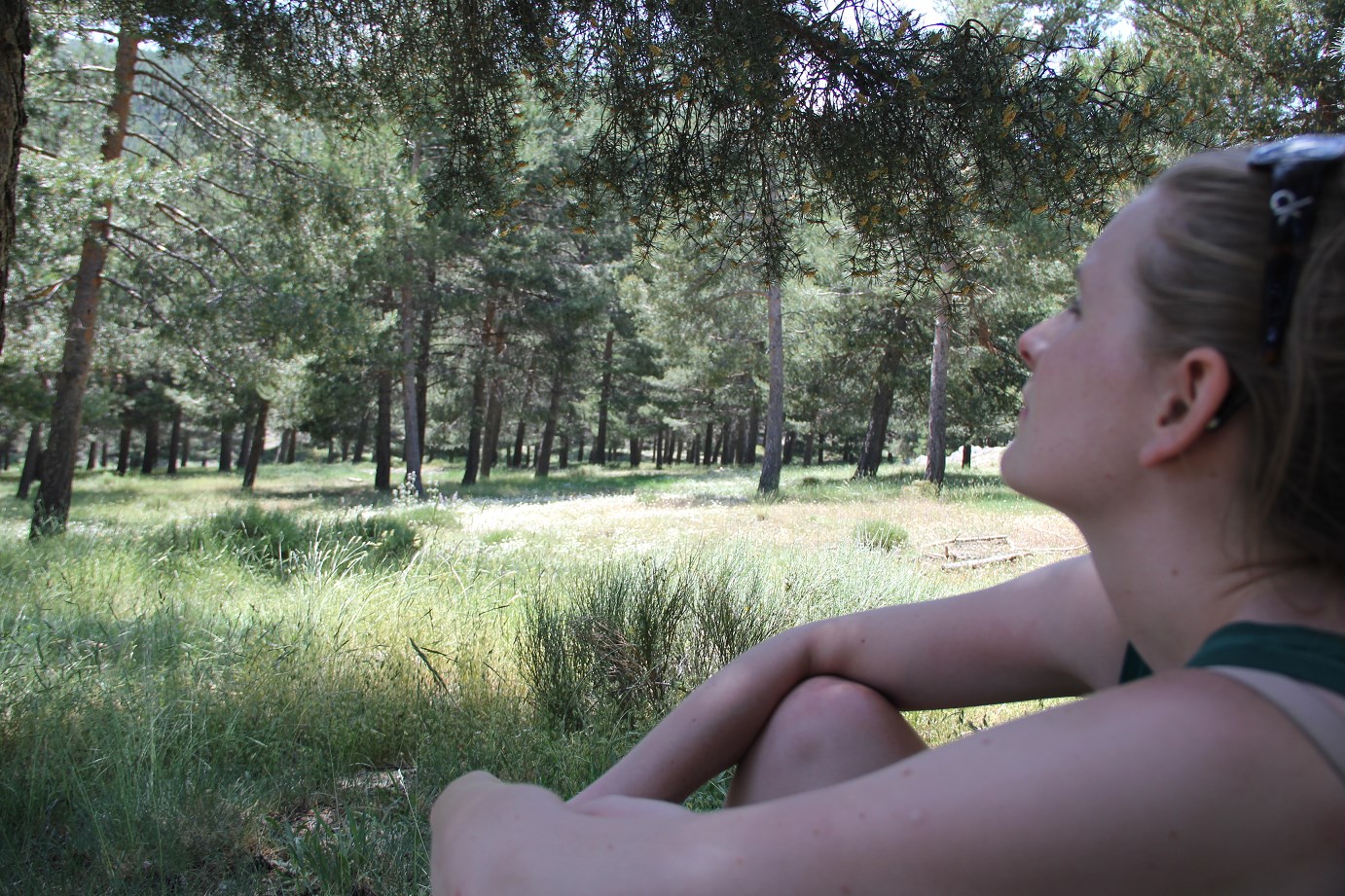Picos de Europa Trek
Picos de Europa is the perfect trip for those who want a challenging trek around some of the most wonderful Spanish mountain landscapes which explore the whole ring of Picos (Anillo of Picos). The Picos de Europa National Park is known to many as the ‘Spanish Dolomites’ thanks to the breathtakingly beautiful treks, strong local culture, and a wealth of animal-life thanks to the varying habitats, from river-valleys which are almost sea-level to alpine environment in the high mountains.
Overview
Picos de Europa is the perfect trip for those who want a challenging trek around some of the most wonderful Spanish mountain landscapes which explore the whole ring of Picos (Anillo of Picos). The Picos de Europa National Park is known to many as the ‘Spanish Dolomites’ thanks to the breathtakingly beautiful treks, strong local culture, and a wealth of animal-life thanks to the varying habitats, from river-valleys which are almost sea-level to alpine environment in the high mountains.
The Picos de Europa (Peaks of Europe) mountain range extends for about 20 km and form part of the Cantabrian Mountains in northern Spain. The range consists of three major massifs; Central (also known as Urrieles), Eastern (Ándara) and Western (also known as the Picos de Cornión). Almost all the rock in the Picos is limestone, the highest peak is Torre de Cerredo (2,650m) but there are so many exciting options to bag a couple of peaks and we’ve included two of our favourite Picos peaks in our itinerary; Torre de los Horcados Rojos (2506m) and Pico de la Padierna (2319m).

Picos de Europa Trek Itinerary
Picos de Europa – regular (A)
Our Picos de Europa itinerary will take you in to a region of dramatic mountain landscapes and lush green valley’s where you will explore the whole ‘Anillo of Picos’ (Ring of Picos), one of the more challenging mountain routes in Europe.
For private groups, including smaller teams, we can arrange private dates to suit you.
Picos de Europa – family option (B)
We also have a ‘family-friendly’ itinerary which is less challenging but still gives you the opportunity to explore the highlights of the Picos de Europa but with shorter day hikes which avoid the need to carry full packs. It’s mainly hotel based although there is one overnight in the Vega de Urriellu refuge, tucked in at the base of the impressive limestone peak of Naranjo de Bulnes but it also offers some free time for R&R and and to enjoy the watersports offered in both the mountains and along the coastline.
The basic cost is £975 per person during peak season (June, July and August) though we can of course discount the prices if you’re travelling in low season, further details on the cost, inclusions, exclusions and optional extra’s are detailed below the itinerary. The fixed dates for this itinerary are listed under ‘Private Itineraries’ under the ‘Dates & Bookings’ tab.
Arrival: Meet at Hotel La Balsa, just outside Cangas de Onis where you will have stunning views of the surrounding Picos de Europa National Park. The itinerary begins with a welcome dinner at a nearby restaurant and trip briefing with your guide. Accommodation: Hotel La Balso
Lago de Enol to Vegarredonda Refugio: After breakfast we transfer to Lago de Enol (Lake Enol – 1063m) within the National Park and begin our trek up to Vegarredonda, through green pasture areas, past shepherd´s hamlets and over rocky paths we ascend to Vegarredonda Refugio (1460m), our accommodation for the night. Originally shepherds’ cabins which were rebuilt in 1987 to provide mountain accommodation for the Western Massif of the Picos, we are surrounded by some of the higher summits of this massif which we will explore in the afternoon with a hike up to a beautiful viewpoint called Mirador de Ordiales, with impressive views to the Dobra Valley. From here, we can ascend to the summit of Pico Cotalba (2028m), before returning to the refuge for dinner and hopefully one of the best sunsets on the anillo. Accommodation: Vegarredonda Refugio

Vegarredonda to Vega de Ario: After breakfast we will start our descent back down towards Lago Ercina where our path weaves through small hamlets and rocky terrain, heading towards the clear division of the western and central massifs, the Cares Gorge. At the highest point of the route, El Jito Pass (1660m), we have incredible views of the central massif ahead. Walking over limestone slabs we gently descend to the refuge of Vega de Ario (1630m). This refuge is remarkably close to one of the deepest cave systems in Spain and offers great views towards the Cares Gorge. Accommodation: Refugio Vega de Ario
Descent to Cares Gorge and Puente Poncebos: After the varied high pasture trek on the previous day, we start today with a challenging and steep descent of nearly 1200m to reach the Cares Gorge, the natural division between the Western and Central massifs. Following an old shepherd’s trail, we reach the hamlet and high pastures of Oston. From here we start a steep but steady and impressive descent through Culiembro gully, surrounded by some curious goat-like chamois and overlooked by vultures we descend towards a small wooded area before we get to the Cares Gorge path. This path was built in the 1920’s as part of a hydro-electric structure and was completed in just 4 years, with rock walls as high as 2000m surrounding the walk and linking the mountain town of Caín (in the province of León) with Puente Poncebos, it is one of the most outstanding gorge walks in Spain. Accommodation: Hotel in Puente Poncebos
Puente Poncebos to Refugio Vega de Urriellu: Unlike the previous day which was mainly a descent, today our route will be a long and steady ascent into the heart of the Central massif. We trek up to the base of Picu Urriellu (also named Naranjo de Bulnes), one of the most famous climbing areas in Picos. The first part of our ascent will take us through a narrow gorge (Texu Gorge) and up to the old mountain village of Bulnes, which was only accessible by foot until 2001 when a funicular railway was built, more as a tourism resource than a transportation improvement for the town. After a coffee stop and wander around the scenic village, we continue ascending along a stony trail surrounded by deciduous trees all the way to the high pasture area of Pandébano, where we will take another break at a mountain hut. The last part of the ascent is along a winding, stony trail to the base of the extraordinary Naranjo de Bulnes. Accommodation: Refugio Vega de Urriellu

Vega Urriellu to Jou de Cabrones Refuge: Our journey immerses deeper into the Central massif with an ascent to refugio Cabrones (2040m). The moonlike landscape surrounds us for the whole day, along short chimneys, and some narrow lanes all the way to Cabrones refuge. Today is a shorter to compensate for the effort of the previous challenging stages and to give us the chance to prepare for the next few days. The refuge is in a sinkhole whose name was given by the presence of Pyrenean ibex in the area in times when those species still inhabited Picos de Europa. Surrounding the refuge are remarkable views of the peaks of Cabrones, Dobresengos and the highest summit in Picos de Europa – Torre Cerredo (2648m). Accommodation: Jou de Cabrones Refuge
Refugio Cabrones to Aliva Refuge vía Horcados Rojos Pass (2344m): Today we head towards the southern side of Picos de Europa. The route starts by ascending to a high pass called Horcados Rojos Pass, which is a scramble of about 300m, although the path is assisted by a cable. Once we reach Collado Horcados Rojos (2344m) and after a short break to admire the views, we can summit the peak of Torre de los Horcados Rojos (2506m). From this high point, with panoramic views all around, we descend through limestone boulders, stopping for a visit at the unique Cabaña Verónica hut. From here, stony paths and an old mining track wind down to green, fresh meadows and Aliva refuge, which has perfect views of the Eastern massif. Accommodation: Aliva Refuge
Áliva Refuge to Jermoso Refuge: This morning we head towards the southwest of Picos de Europa where we enter the province of Leon. Retracing our steps back towards Horcadina de Covarrobres along the mining track before taking a trail through Canal de San Luis and on our way, if the weather is kind, we ascend the summit of Pico de la Padierna (2319m). After admiring the views, we gradually descend through rocky terrain to get the highest refuge on our route, Jermoso Refuge (2064m). This refuge is nestled in a great mountain location with cosy facilities and views to match. Accommodation: Jermoso Refuge
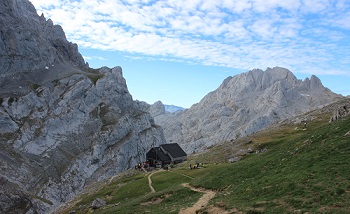
Jermoso Refuge to Refugio de Vegabaño: We leave the high terrain behind, scrambling down from Jermoso through Argallo Congosto. With some more scrambles we descend gradually to Vega Asotín, a quiet meadow below the impressive Torre del Friero. From here, before a last look back to the high summits in Picos, our route heads into a path through a beech forest that ends at an incredible trail carved in the rock, La Rienda, leading to the mountain town of Cordiñanes, in the Valdeón valley. After a short stop, we continue our hike along the Cares river to the town of Caldevilla where a forest trail takes us up towards Peña Dobres. The last part of our route descends through a wild beech forest, home of the capercaillie grouse, until we reach the quaint refuge of Vega Baño. Accommodation at Refugio de Vegabaño
Refugio de Vegabaño to Espinama: Our last day trekking contours the southern face of Picos de Europa. Leaving our last mountain refuge we retrace our steps from the day before back to the mountain town of Valdeón. From here we follow an old path that the traders previously used to get from this province (Leon) to the local markets at the nearby province of Cantabria. A gradual ascent to the pass of Caben de Remoña leaves forested areas behind and takes us back to higher pastures where we can once again admire the peaks above us. The last part of our hike and traverse through the Picos, descends gradually through a deciduous forest full of beech, oaks, and hazels, ending at our hotel in the mountain town of Espinama for some well deserved R&R. Accommodation: Hotel in Espinama
Departure / onward travel: After breakfast, we leave the Liébana valley and Picos de Europa. Depending on your flight time / onward travel plans, we can prepare a visit to Potes (20 minutes by taxi). Potes is one of the most popular villages in northern Spain, a good place to taste your last Spanish delicacy of this trip and pick up souvenirs.
Arrival: Meet at the Hotel Nevandi (half board) in the small mountain town of Espinama for an evening briefing with your Guide. An early arrival will give you the chance to enjoy the facilities at the hotel or a short walk around this quaint village which has surprises around every corner. On the drive from the airport you may also wish to stop off at the beautiful medieval town of Potes for a taste of the traditions and culture of this part of northern Spain. Accommodation: Hotel Nevandi (half board)
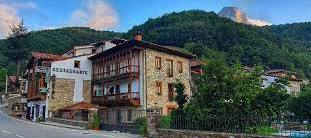
Fuente Dé to Horcados Rojos to Fuente Dé: Transfer to the area of Fuente Dé, where we take a short cable car journey from Fuente Dé (1100m) to the high El Cable viewpoint (1800m). From here we start our trek up to Horcados Pass along a moonlike landscape as we follow a wide mining trail towards a higher, rockier area where this trail becomes a narrow stony path with a steady ascent. Every glance back has impressive views of the Picos de Europa in the Cantabrian range as we finally reach Horcados Rojos Pass and the imposing sight of some of the higher summits. From here we have the option to trek up to the summit of Horcados Rojos (2506m) before descending to the peculiar hut of Cabaña Verónica for lunch and back to the viewpoint of El Cable for the ride back to Fuente Dé. From here we drive to the northern side of Picos de Europa, where a hotel with swimming pool and more adventures are waiting for us in the town of Arenas de Cabrales, in the province of Asturias. Accommodation: Hotel Picos de Europa (half board)
Poncebos to Caín to Poncebos: Today is a completely different landscape from the previous day’s high rocky route, we trek along one of the most majestic gorges in Spain (Cares Gorge) on an old 11km trail that links two mountain locations in Picos de Europa – Poncebos in the north and Caín, a picturesque village in the south. The route is varied, at times we’re higher up on a stone carved path overlooking the river, surrounded by high limestone walls, but as we get closer to the town of Caín we drop down towards the river and into the narrow part of the Gorge. We’ll get lunch in Caín and refresh our feet in the river before trekking north along the same trail and back to Poncebos and our hotel in at Arenas de Cabrales. Accommodation: Hotel Picos de Europa (half board)
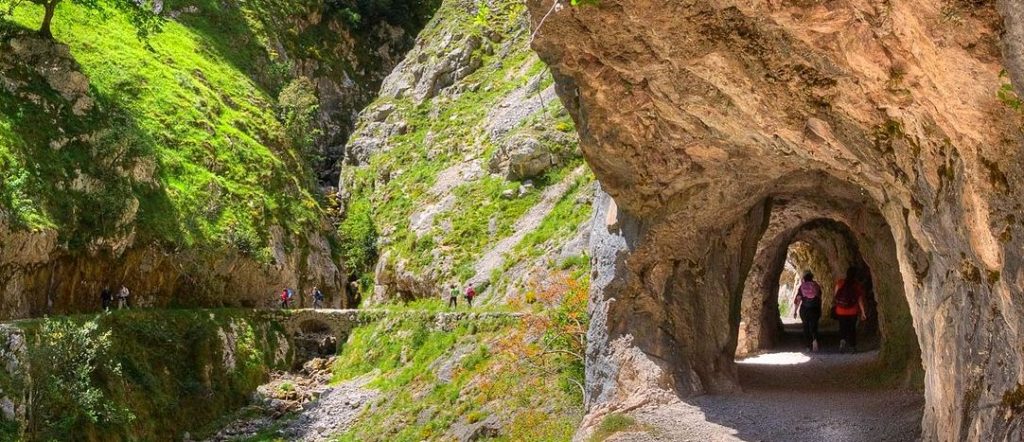
Free day for preferred leisure time: After already trekking a couple of the classic routes in Picos de Europa, today gives you the chance to experience a bit more of what these mountains have to offer, it’s a free day in which you could book a guided water activity like canoeing, white-water rafting or canyoning, or just relax by the swimming pool in your hotel. Your guide will let you know all the options available. Accommodation: Hotel Picos de Europa (half board)
Collado Pandébano Pass to Refuge Vega Urriellu: Back to trekking in the mountains today as we leave the valley to trek into the heart of the Picos de Europa and sleep under the stars next to the high peaks. After preparing for the overnight we begin with a 4×4 transfer to Collado Pandébano Pass where we will trek along a trail to the Urriellu refuge. Not far from the start of the trek we stop to fill water bottles and take in the views, at a small hut called Refuge Terenosa. From here we really start our ascent, at a steady pace with plenty of short breaks to enjoy the stunning rocky landscape surrounding us. As we get higher, and closer to the high pastures of Urriellu, the impressive peak of Naranjo de Bulnes (2519m) becomes even more apparent. At Urriellu refuge (1953m), tucked in right next to the peak of Naranjo de Bulnes, we can explore the surroundings and enjoy an evening sharing experiences with many other climbers and trekkers. Accommodation: Refugio Vega de Urriellu (half board)
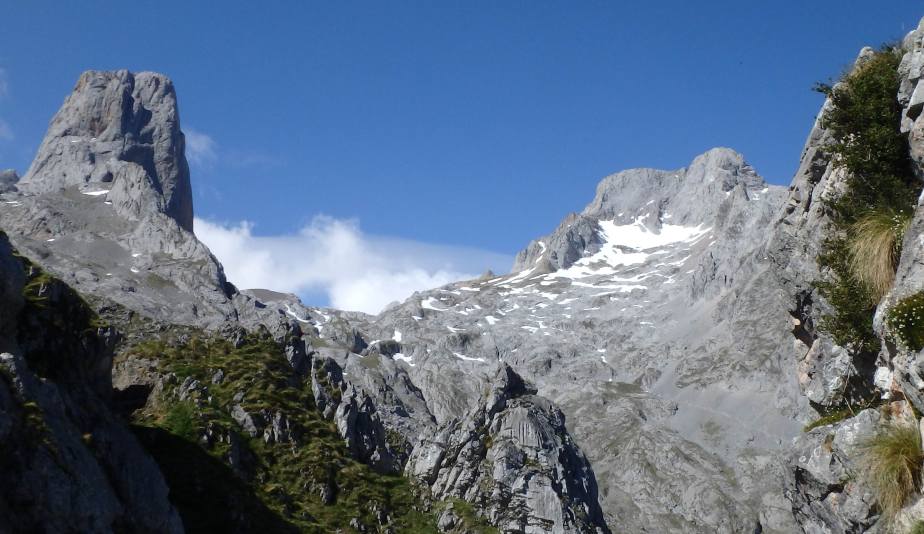
Refuge Vega Urriellu to Collado Pandébano Pass: Today may be our last day in the mountains but there are still a couple more adventures before the itinerary ends. We say goodbye to the choughs, vultures, chamoix and alpine flowers and descend from the hut after breakfast, stopping for an early lunch at the smaller hut we passed yesterday and back to Collado Pandébano Pass, yesterdays starting point. One of the many charms of this small but unique mountain range is that it is remarkably close to the coast, so in the afternoon we transfer to the Cantabrian coast and the beautiful medieval fishing town of San Vicente de la Barquera. This lively town will be where we spend our last night where you can explore the medieval part of town, book a surfing lesson, hire jet skis or take a historical boat tour. In the evening your Guide will meet you for a farewell dinner. Accommodation: Hotel Faro de San Vicente (Bed & Breakfast)
Departure / onward travel: After breakfast, the itinerary ends however we can help you extend your stay, a couple of options are mentioned below – contact us for further details. If you’re not staying on then we can help arrange transport back to the airport.

Ready for an Adventure of a Lifetime?
Choose a scheduled date or contact us to set up private dates or a bespoke itinerary. The minimum deposit is £100.00 and the balance is due four weeks before travel.
Fixed Itineraries
No upcoming trips found.

